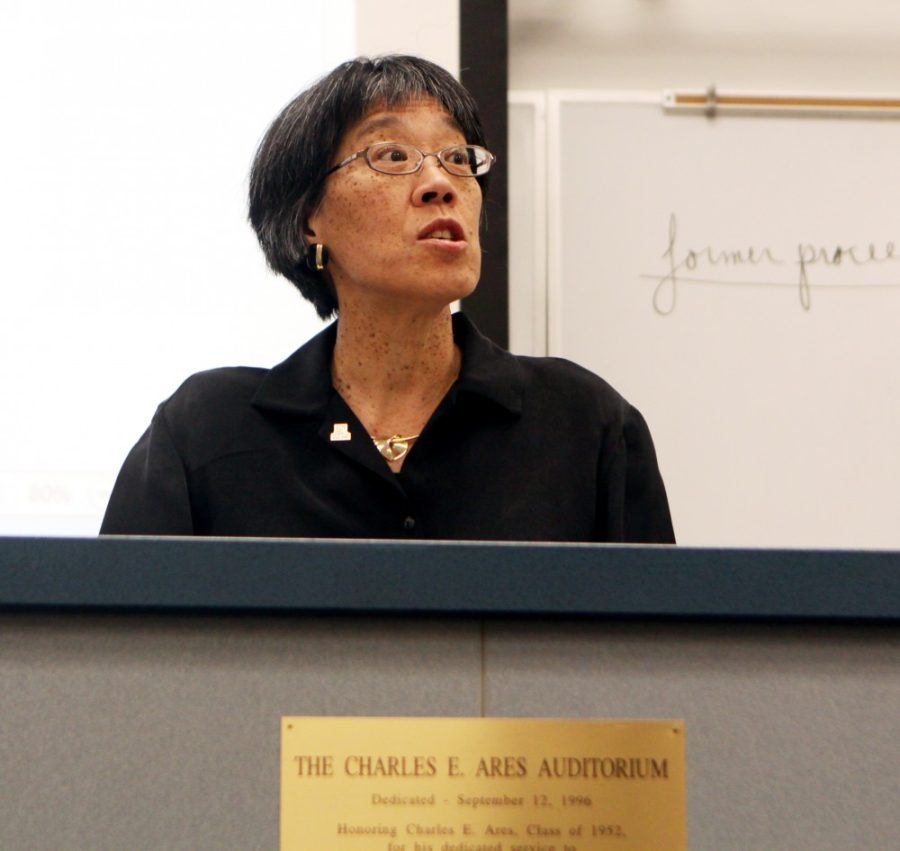In Provost Jacqueline Mok’s first Faculty Senate meeting as the UA’s chief academic officer on Monday, scholastic issues took a backseat to information technology issues and the goings-on at ASU.
The senate heard a presentation from Michele Norin, the UA’s chief information officer, about the UA Connect project. The project is an ongoing effort to modernize the university’s email and calendar environment.
Norin said the overall goal of the project is to make the UA’s information offerings more reliable, but acknowledged that the array of different types of machines used by faculty and staff, particularly older machines, had become a mitigating factor in the process.
“We underestimated the effort it (the migration) would take,” she said.
Derek Masseth, senior director of infrastructure services for University Information and Technology Services, said one of the techniques to make the university’s information offerings more integrated and efficient was a shift to BPOS, a messaging and collaboration platform operated by Microsoft that the UA uses at a cost of $500,000 a year.
Masseth acknowledged there had been “a lot of challenges” with the migration, but that the 8,000 or so who were already using the service were having a “wonderful experience.”
Wanda Howell, the chair of the Faculty Senate, asked why the migration had to be mandatory. Masseth responded that it was based on the per-user cost and flexibility the service provided.
Norin did say that the migration did not exclude departments or colleges from using their own, internal systems, but that those determinations have to be made with the approval of the IT team.
John Ulreich, an English professor, expressed a common complaint that the migration had interrupted regularly reliable service.
“For me, the system was working, and you had to fix it and now it doesn’t work,” Ulreich said. “At my age, this is irritating.”
Ralph Renger, a public health professor, asked why a migration was necessary when many faculty members had no problems with the old system.
“We need a one-page talking point about why we are moving,” Renger said.
Norin said it is important to understand that there are more tools at the faculty’s disposal, and that this “suite” of products may take longer to get fully functional.
“We’re going to get more, and we need to be able to support more,” she said.
Andy Silverman, a former clinical professor of law, raised concerns over Arizona State University’s partnership with the Mayo Clinic to operate a medical school in Phoenix. ASU and the UA signed an agreement to jointly operate a medical school in Phoenix in 2004, but ASU opted out of that agreement in 2010.
Silverman said he was worried that this new medical school was “considerable competition” to the UA’s Phoenix Biomedical campus, which is the only medical school in the state.
UA President Eugene Sander said he was not worried about the partnership, and said that the combined student output of the two campuses, around 250 a year, was “just about right” for a state the size of Arizona.
“Big time science is a team game,” Sander said.
_— Eliza Molk contributed reporting to this story. _









